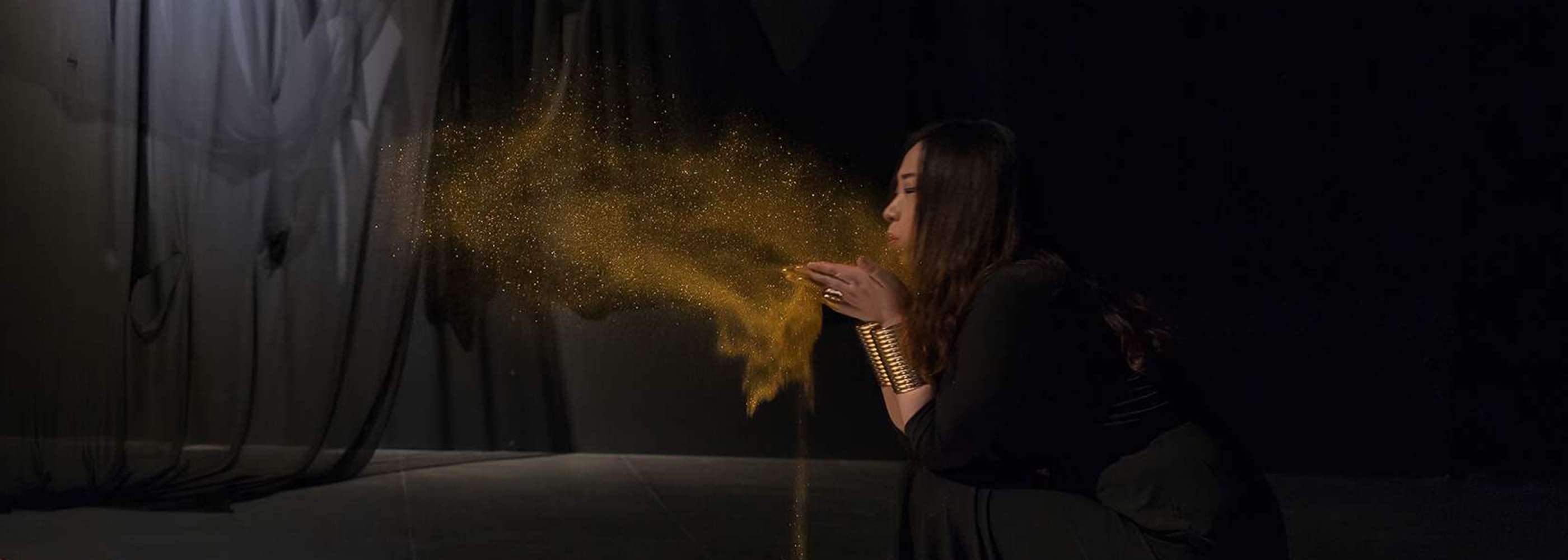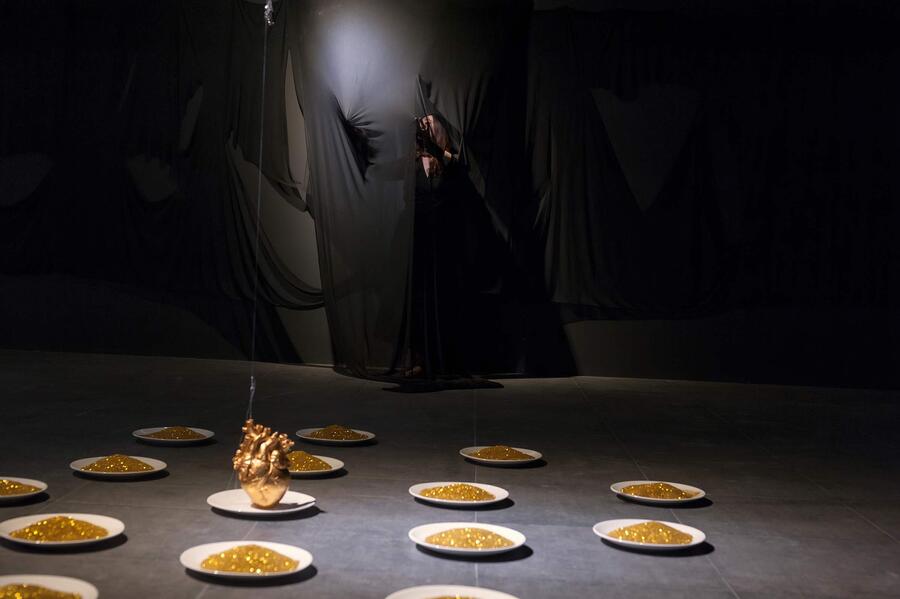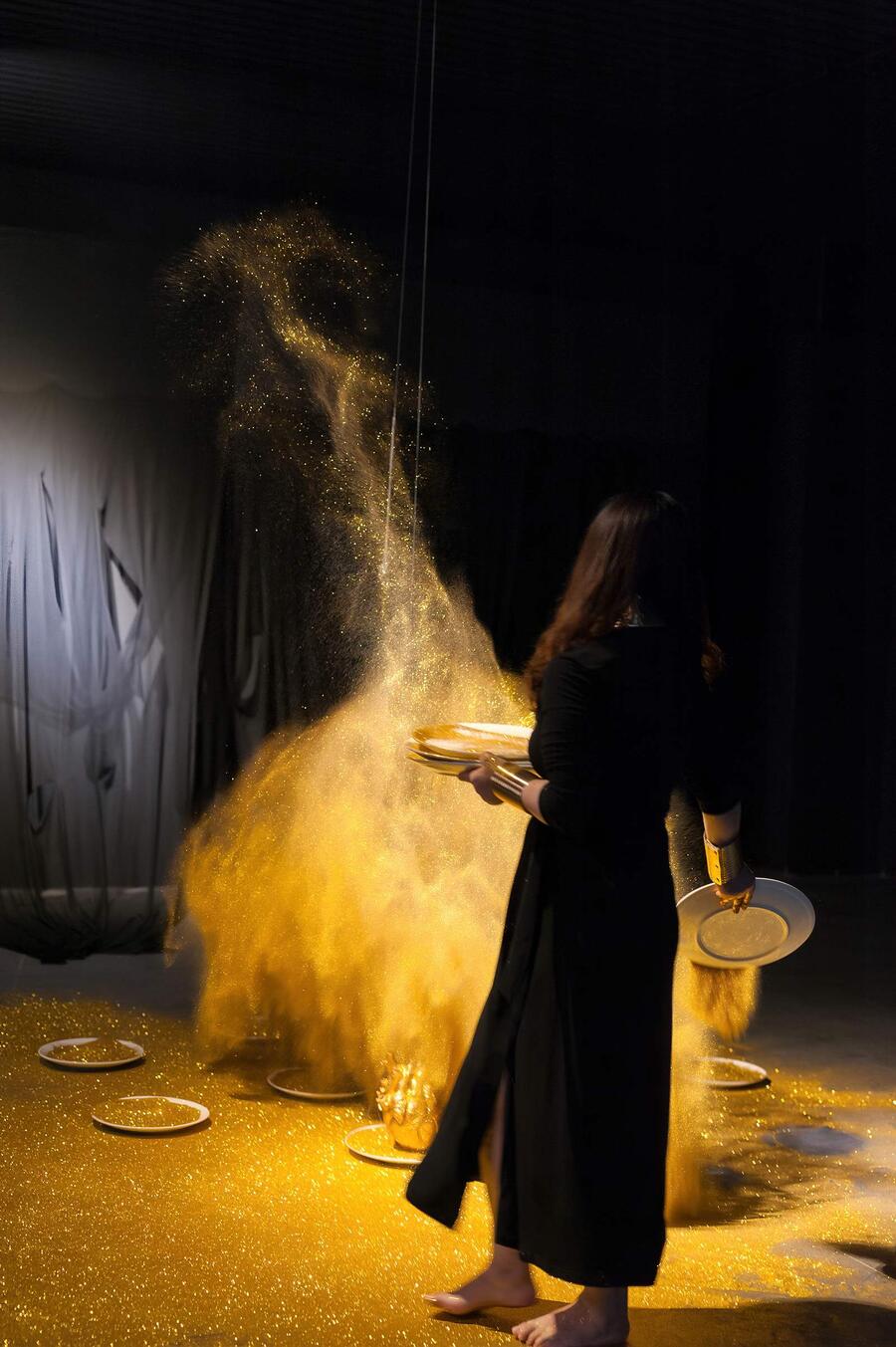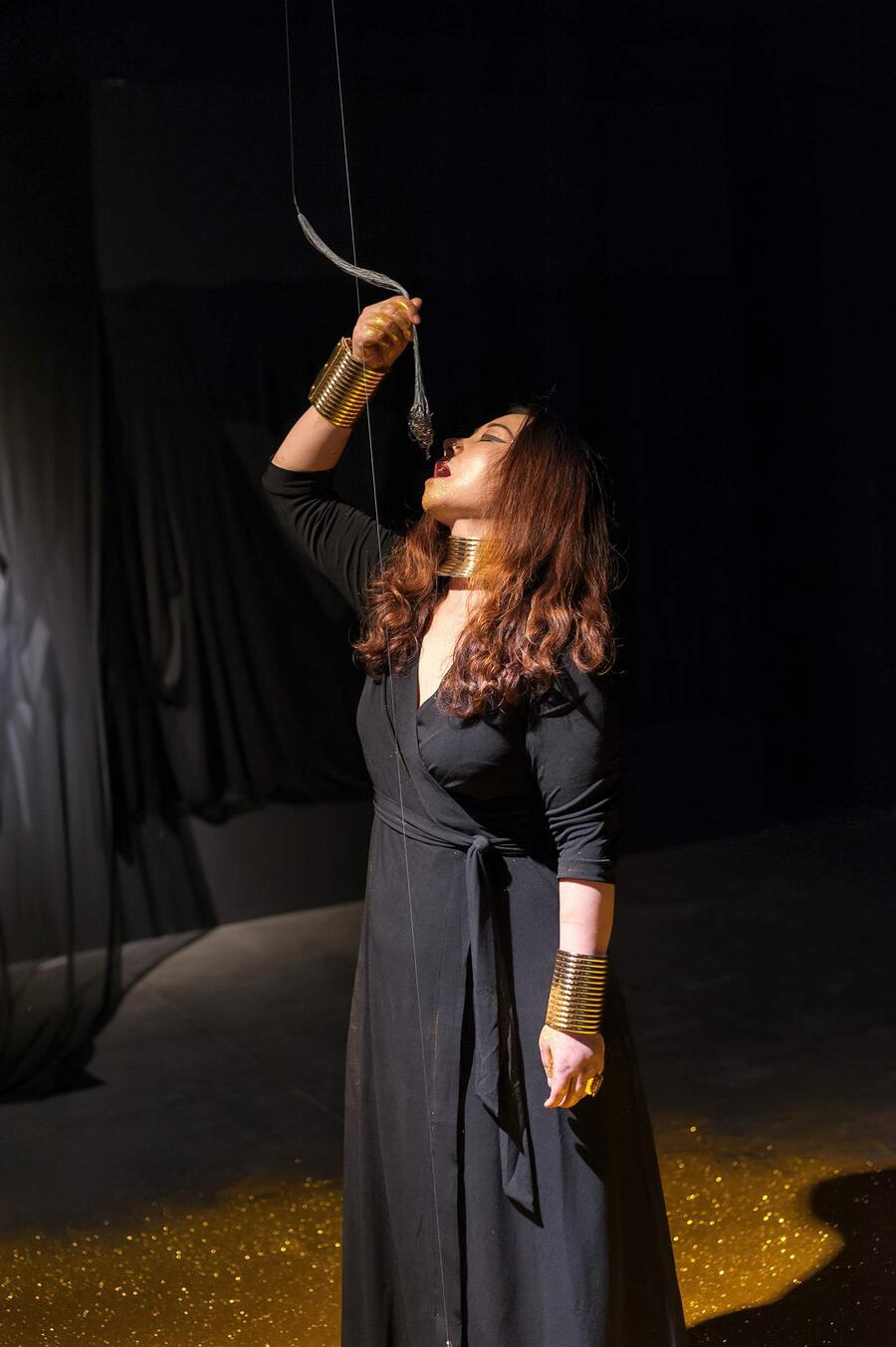

The "Golden Age" refers to a period from 1710 BC to 1674 BC, corresponding to the rule of Cronus, when humans lived carefree and happily alongside the gods, without the need to labor for food, free from disease or death.
When conceptualizing "The Golden Age," the first thing that came to mind was the color gold. I chose a special gold powder material for this reason. A golden heart serves as the central element of the artwork. Fishhooks are attached to this heart, symbolizing the connection between the heart and pain. I have observed fishing scenes where fish struggle desperately when hooked, and I could sense their pain. In a way, the people here are like overcrowded fish in a pond, waiting for their fate to be determined by a fishhook and placed on a chopping board. I envisioned a scene where a string of fishhooks is simultaneously inserted into the mouth—a pain that cannot be expressed.
The museum's exhibition wall is black, and I used it as a backdrop. A cross-shaped installation made of black gauze is set up on the wall. In front of this installation hang the heart and fishhooks. White porcelain plates surround the plate holding the heart, each containing gold powder. The heart, fishhooks, white porcelain plates, and gold powder together form a symbolic installation, creating an immersive atmosphere.
The symbolism of the heart draws from ancient Egypt. During mummification, the ancient Egyptians removed the organs one by one, holding the heart in high regard as it recorded the good and evil deeds of the deceased. The heart was placed in a jar or returned to the chest cavity, to be weighed against the feather of the goddess Ma'at in the afterlife. Ma'at, the goddess of truth and justice, judged whether the heart's owner had been virtuous. If the heart was lighter than Ma'at's feather, the deceased would enjoy eternal life; if heavier, it would be devoured by the monster Ammit. In this sense, the heart served as a measure of justice and morality.
My clothing also draws inspiration from ancient Egypt. Black and gold constitute the main color scheme of this artwork. Gold symbolized the sun in ancient times, representing eternity and immortality. It was abundant in the sculptures, crafts, and paintings of ancient Greece, Egypt, Christianity, and Buddhism. The golden heart symbolizes purity and an immaculate heart, a universal characteristic of people in the Golden Age. Thus, the people of the Golden Age were closest to divinity, understanding the heavens and earth, and receiving protection and blessings, much like humans in the Garden or in their childhood, a time when people had untainted hearts, free from deceit or hatred.

In the performance, I initially stood behind a black veil, obscured by it. I used a knife to cut open the veil, revealing myself through the slits, with light shining through the cracks. This process symbolized cutting through the night to reveal the light in the quest for truth.
I approached a row of porcelain plates arranged with the heart at the center. I grabbed the gold powder and blew it, similar to how the Dream God Morpheus scatters golden sand to create dreams. I lifted the porcelain plate, and the golden powder scattered in my hand, surrounding the heart in a circular golden field. I then became quiet and focused on the row of fishhooks hanging in the air. Gradually, I put the fishhooks into my mouth, experiencing stinging, discomfort, sharpness, coldness, and rigidity as 48 fishhooks filled my oral cavity. I had to be extremely focused, biting down on the fishhooks tightly. Slowly, my body moved downward, and the heavy golden heart, fixed at the other end of the fishing line, rose gently. This moment was filled with tension and adventure, with the risk of an unimaginable and gruesome outcome if not handled carefully. The delicate fishing line moved slowly on the metal beam, and the heart rose into the air as I descended until I was lying on the ground. Finally, the golden heart and fishhooks were connected and hung in the air. After completing the performance, I left behind the installation scene. In this performance, I integrated the installation and the action, making the process of the action part of the creation of the installation and space.